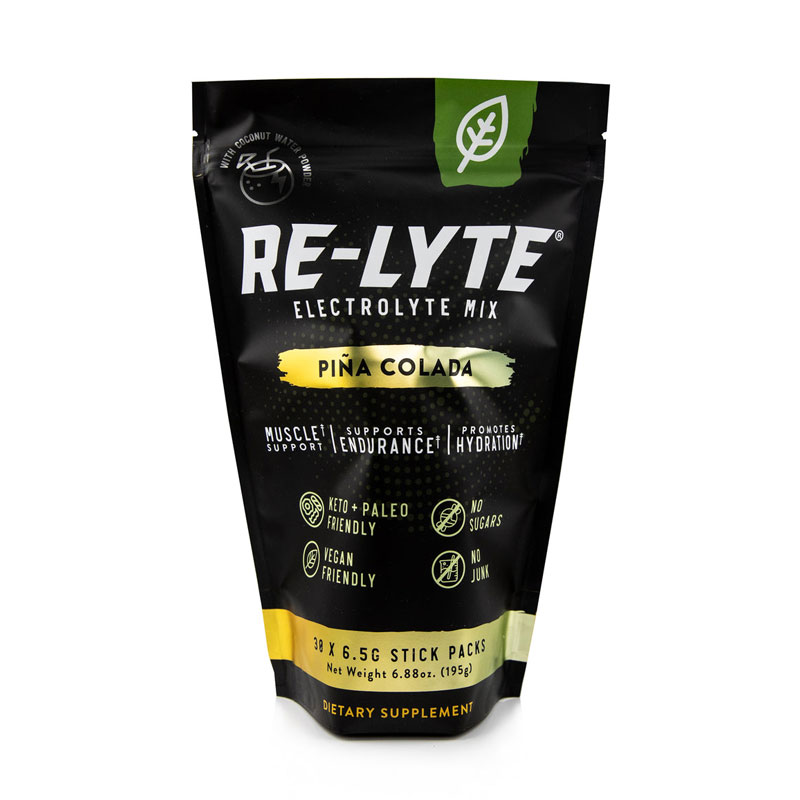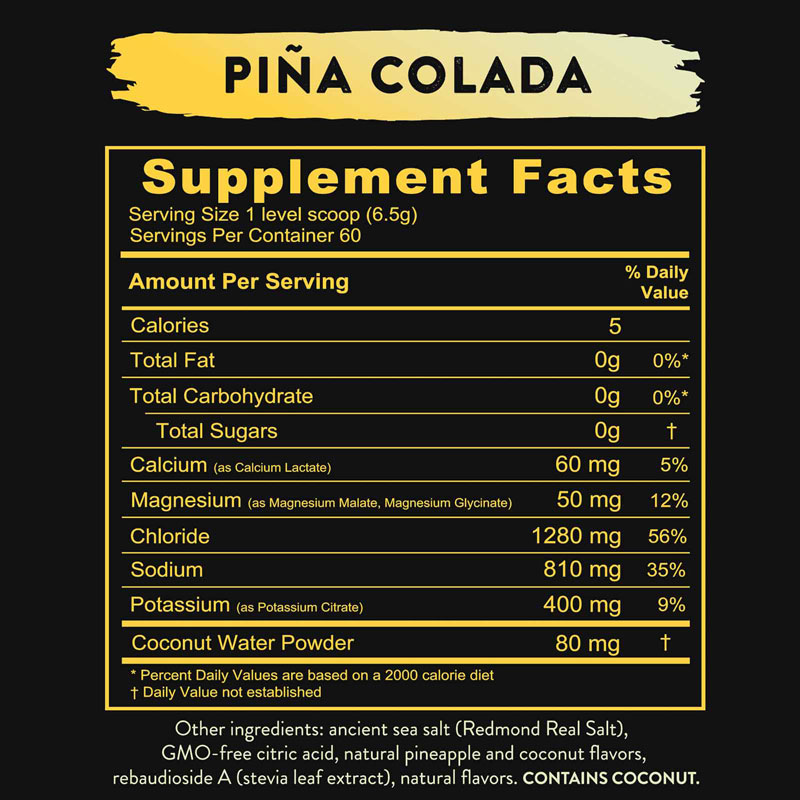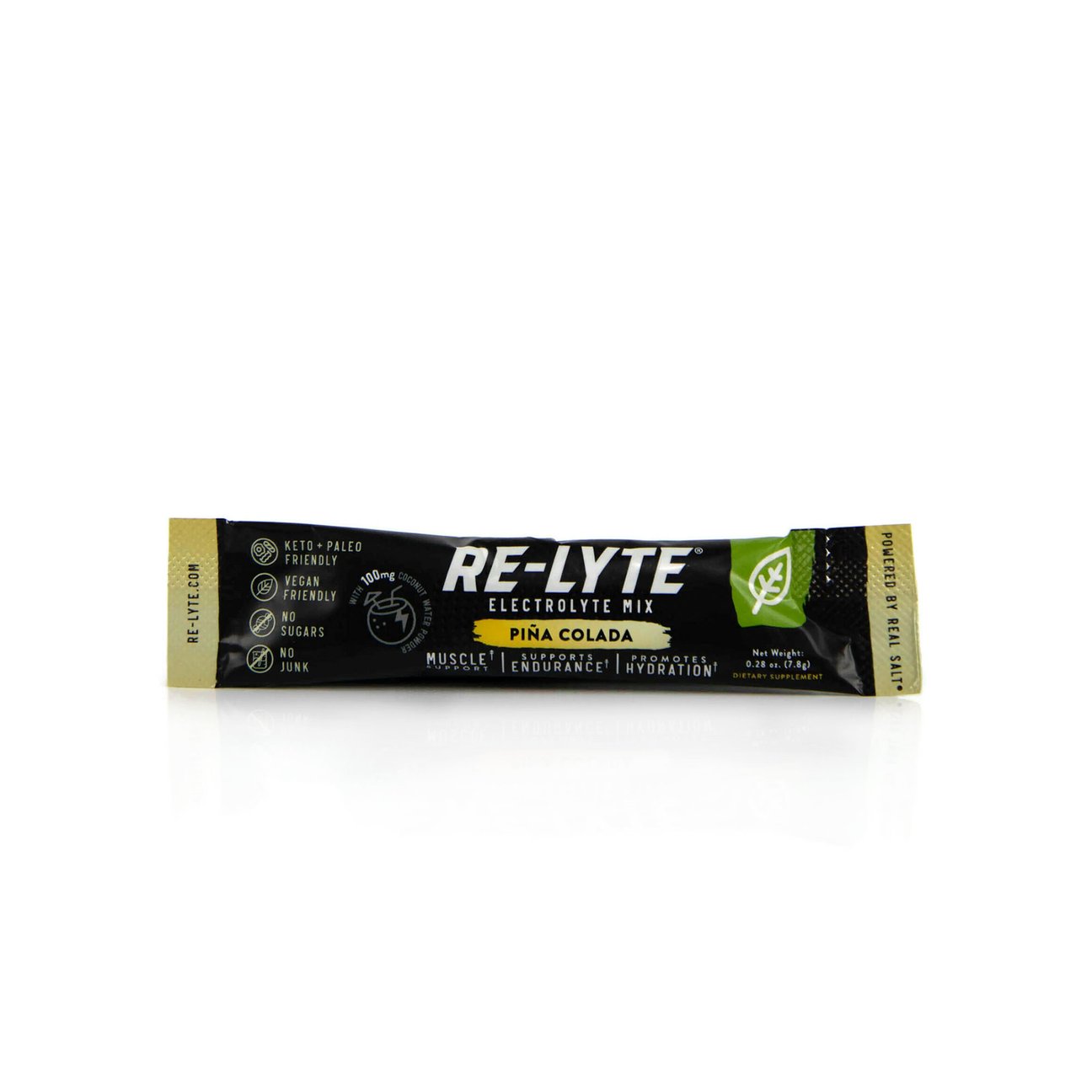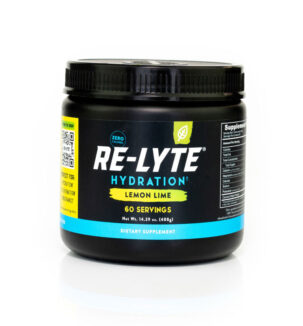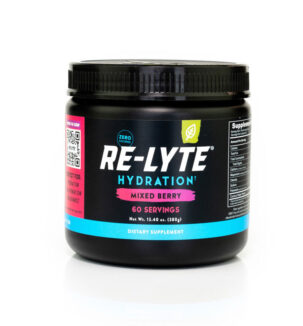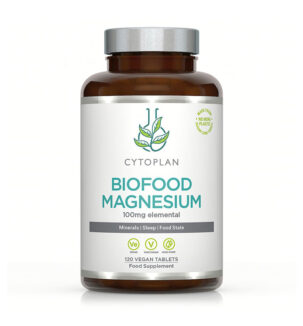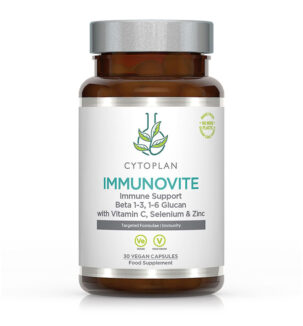Description
Redmond Re-Lyte® is a refreshing, effective electrolyte mix that only contains the cleanest ingredients. Through a perfectly balanced blend of micronutrients, Re-Lyte keeps your cells and muscles optimally hydrated so you feel your best.
How much Re- Lyte is too much?
Redmond recommend sticking to 1 to 3 servings per day of Re-Lyte depending on your body and lifestyle. How much you exercise, the climate you live in, if you have health issues that cause vomiting or diarrhea, if you’re pregnant or nursing, along with a variety of other factors will all influence whether your electrolyte needs fall on the higher or lower end of that spectrum.
But you may still be wondering: If Re-Lyte’s so healthy, why do I have to limit how much I take?
Well, it is possible to get too many electrolytes, and Redmond prefer to err on the side of caution, since their products contain a generous dose of them, especially sodium.
At this point, there is no Tolerable Upper Intake Level (UL) set for sodium because there’s very little evidence that sodium causes toxicity in healthy people even at very high doses. All of the other electrolytes in Re-Lyte fall within safe and healthy ranges as long as you stick to the 1-3 servings per day guideline as well.
But regardless of any electrolyte recommendations Redmond or anyone else gives you, you should also pay attention to the signs your body gives you. If you’re not getting enough electrolytes, you may experience things like headaches, dizziness, and fatigue. If you’re getting too many, you may develop a stomach ache and/or diarrhea.
The colour of your urine can be a sign that you need more electrolytes too. If your urine is completely clear, it may mean that you’re drinking too much water without enough electrolytes to balance it out. Salt cravings could also be a sign you’re low in sodium. Your body has a finely tuned salt thermostat that’s developed over years and years of evolution to make you crave salt when you need it and be turned off by salt when you don’t.
The truth is, electrolyte intake—and hydration in general—aren’t things you can issue one-size-fits-all guidelines for. Everybody and every body is different.



